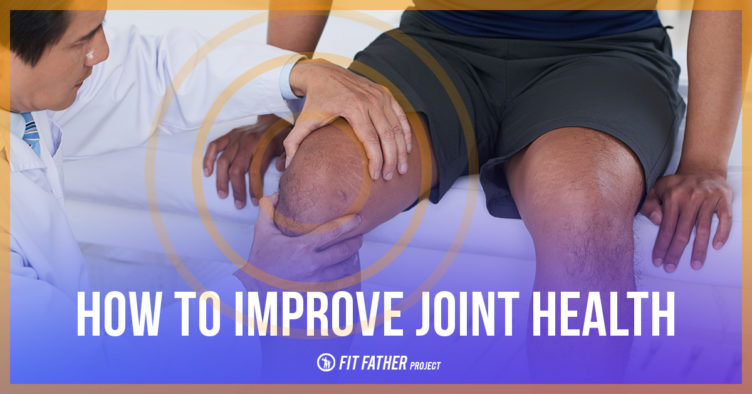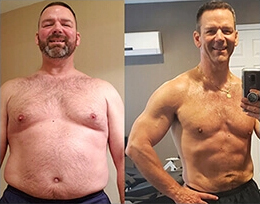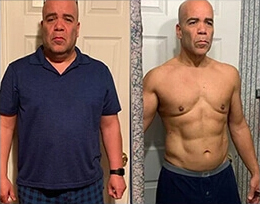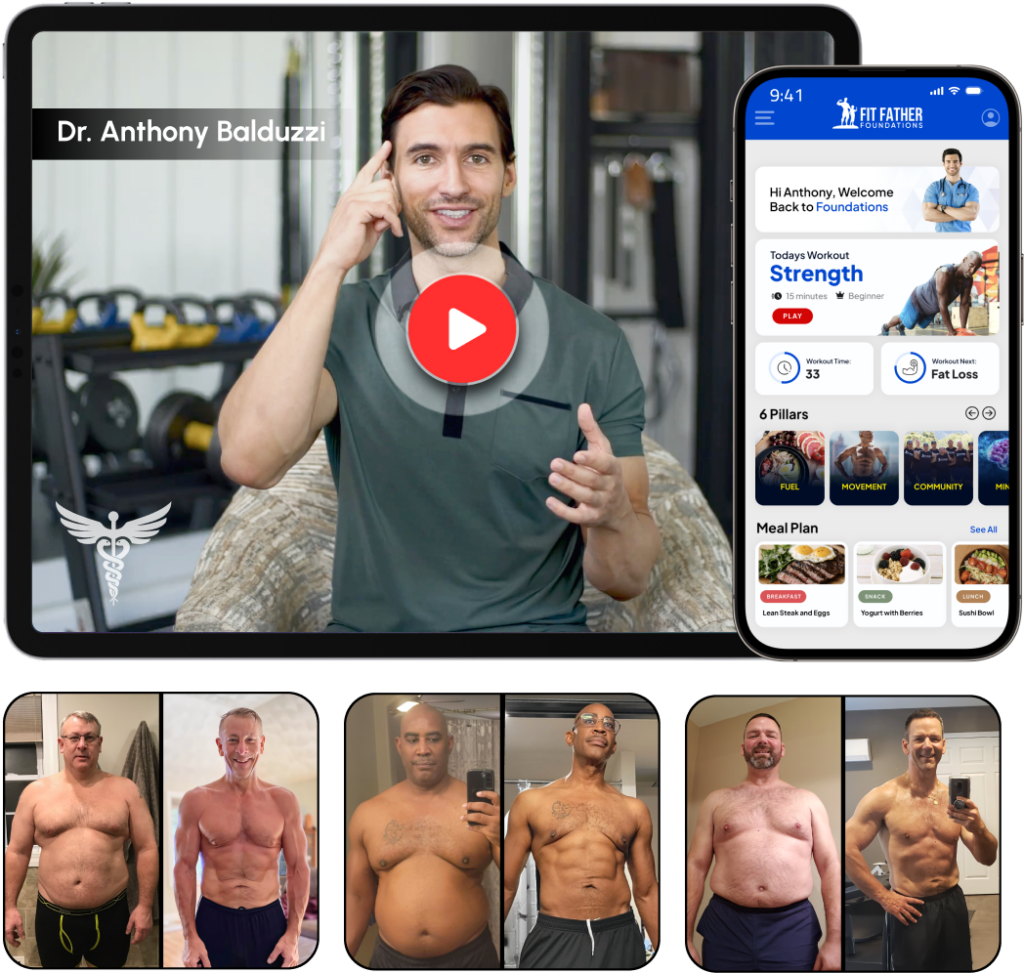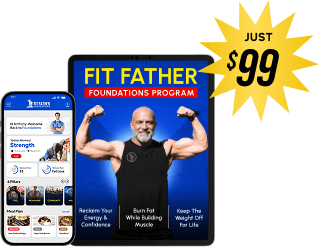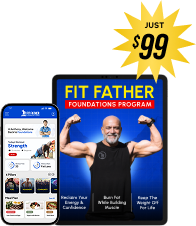Maximizing joint health is more important than ever, especially if you struggle with age-related joint wear-and-tear or arthritis.
If you're at risk of joint problems or you want to avoid pain and tissue deterioration in the future, take steps to improve your joint health by making changes (one at a time) to your lifestyle habits.
Eat foods known to maximize joint health and reduce inflammation, avoid inflammation-causing foods, do the right exercises, protect your joints, get plenty of sleep, and allow your body to recover properly after exercise.
Don't forget to warm up before workouts and stretch when you're done exercising.
See your doctor for arthritis screening if you're at risk of developing the disease or if you experience joint swelling or pain.
While you can't always avoid joint problems, you can improve your joint health with diet and exercise.
Here are 15 ways to do it!
Learn how to improve your posture with these 3 ideal posture positions.
15 Ways To Better Joint Health
Eat Nutritious Foods
Eat nutritious, joint-healthy foods on a regular basis to enhance joint health and reduce your risk of injuries and other complications.
According to Penn Medicine, Harvard Medical School, and Cleveland Clinic, foods that are good for your joints include:
- Fatty fish like tuna and salmon
- Cruciferous vegetables and greens, such as broccoli, kale, spinach, collard greens, Brussels sprouts, and cauliflower
- Onions
- Olive oil
- Nuts
- Berries
- Cherries
- Oranges
- Green tea
- Ginger
- Turmeric
- Garlic
- Tomatoes
Many of these foods are loaded with disease- and inflammation-fighting antioxidants, vitamins, minerals, protein, fiber, and heart-healthy fats — all of which are beneficial for maintaining superior health.
In addition to improving the integrity of your joints, these foods also enhance your heart health, brain health, and overall wellness.
Do the Right Exercises
If you have joint problems and struggle with inflammation and pain, your doctor might suggest you avoid high-impact exercises like running, playing basketball, and jumping.
Exercises that are easier on your joints include cycling, rowing, walking, swimming, stair climbing, and using an elliptical machine.
Always use the proper form when strength training and avoid lifting weights that are too heavy.
This helps you avoid placing excessive pressure on your joints.
Take Dietary Supplements
Some dietary supplements may enhance joint health, so consider taking them if your doctor recommends them.
According to the Arthritis Foundation, the following dietary supplements appear to improve the health of your joints: multivitamin supplements containing vitamin D and vitamin K, fish oil, curcumin, glucosamine, chondroitin, and S-adenosyl-methionine (SAM-e).
At a minimum, make sure to get enough essential vitamins, minerals, protein, and omega-3 fatty acids via a healthy diet combined with dietary supplements whenever needed.
Maintain a Healthy Body Weight
Carrying excess body weight can take a toll on your joint health, putting extra pressure and tension on joints and increasing the risk of joint injuries.
Focus on reaching and/or maintaining a healthy body weight to minimize the stress placed on inflamed or painful tissues.
Aim to lose weight by working out more, making dietary changes, keeping stress levels low, limiting or avoiding alcohol, and getting plenty of sleep (at least 7 hours per night).
Protect Injured Joints
If you have painful or injured joints, protect them when you exercise by doing workouts that don't overstress the affected joints.
You might wear protective gear like braces or athletic tape that stabilizes the joints to prevent further problems.
If you have ongoing or severe joint pain, your doctor may recommend you avoid placing pressure on the joint by steering clear of exercise altogether for a period of time or only doing certain types of workouts — such as walking, swimming, or cycling.
Ask your doctor which exercises are the safest for your personalized needs.
Listen To Your Body
If your joints begin to hurt, listen to your body and avoid continuing on with a painful workout to reduce the risk of injury.
Don't overdo it when it comes to exercise, even if you have no history of joint damage or pain.
Take days off from working out whenever you need to, cross-train to avoid overworking certain muscle groups, and steer clear of high-impact exercises if you begin to develop joint swelling or discomfort.
Ask Your Doctor About Holistic Injections
Joint wear-and-tear is common with aging, but being proactive about your joint health might mean talking with your doctor about platelet-rich plasma (PRP), stem cells, or other holistic injections that help rebuild cells within your joints naturally without the need for invasive procedures.
PRP is an injection of platelets from a sample of your own blood into painful or injured joints.
These platelets stimulate new cell production to ease discomfort and optimize healing.
Regularly Check In With Your Doctor
There are numerous reasons to check in with your doctor on a regular basis, and maintaining superior joint health is just one of them.
Your doctor can detect joint damage, arthritis, and other joint diseases before they turn into troublesome complications.
Routine arthritis screening uses blood tests or other methods to evaluate your joint health.
Staying on top of arthritis treatments, in addition to eating healthy foods and getting regular exercise, can diminish joint deterioration and discomfort caused by arthritis.
Warm-Up and Stretch Properly
To avoid joint damage and other injuries, it's important to warm up for at least 5 minutes before working out.
Stretching after exercise can also diminish discomfort.
Don't overdo it when you first begin sweat sessions to protect your joint health.
Ease into workouts gradually and always listen to your body.
If you feel pain, stop exercising or ease up on it.
Limit or Avoid Foods That Cause Inflammation
In addition to eating foods that optimize joint health, it's important to steer clear of or reduce your intake of foods that tend to contribute to joint inflammation, obesity, and the risk of developing a chronic disease.
Cleveland Clinic recommends reducing (or avoiding entirely if you can) the following foods linked to joint inflammation or pain:
- Added sugars found in sodas, other sugar-sweetened drinks, sweets, sugar-sweetened condiments, and additional foods sweetened with added sugar
- Refined grains, such as white rice, regular pasta, and white bread
- Fried foods
- Highly processed meats like hot dogs, ham, sausage, regular bacon, and deli meats
- High-fat cuts of red meat
- Alcohol
Choose whole or minimally processed foods whenever possible to fight inflammation, maximize joint health, and minimize your risk of joint discomfort.
Keep Your Bones Strong
There are several ways you can keep your bones strong to enhance joint health and reduce the risk of fractures and other injuries.
Exercise regularly by completing a combination of aerobic and strength-training workouts.
Consume three servings of dairy foods like milk, Greek yogurt, plain kefir, or calcium-fortified plant-based alternatives.
Doing so helps you obtain the calcium, vitamin D, and other bone-strengthening nutrients needed to maintain healthy bones.
Use Proper Lifting Techniques
Whether you're lifting weights or other heavy objects, it's extremely important to use good form when doing so to reduce the risk of joint damage and other injuries.
Don't lift too much weight and listen to your body.
Use lifting straps or belts if you need to lift heavier objects to reduce the chance of placing excessive pressure on joints and getting hurt.
Wear Comfortable Shoes
Wearing poor-fitted footwear can take a toll on your joint health, placing unnecessary strain on your feet, ankles, knees, and other joints.
Wearing uncomfortable shoes often increases joint wear and tear, leading to inflammation and pain.
Choose comfortable footwear that's not too tight, and wear show inserts if needed to improve the position of your feet and joints when you move your body.
Don't Smoke
Smoking isn't good for your overall health, or the health of your joints.
Studies confirm that smoking is linked to increases in joint disease and adverse effects on tendons, cartilage, muscles, ligaments, and the musculoskeletal system as a whole.
If you don't smoke, avoid starting.
If you're a smoker, do what you can do quit on your own, join a smoking cessation program, or ask your doctor about medications or other treatments that make it easier to quit smoking.
Don't give up after a failed attempt, as it often takes multiple tries to quit smoking for good!
Consume Plenty of Vitamin C
Vitamin C benefits your overall health, including the integrity of your joints, in multiple ways.
Studies show that vitamin C helps prevent arthritis, is beneficial for joint health in people with osteoarthritis, improves your quality of life, and reduces the need to take pain medicines for bothersome arthritis symptoms.
Eat vitamin C-rich foods, take a multivitamin supplement containing vitamin C, and consider extra vitamin C supplementation if your doctor recommends it.
Foods rich in vitamin C include oranges, other citrus fruits, red and green peppers, kiwi fruit, orange and grapefruit juices, Brussels sprouts, cantaloupe, broccoli, strawberries, and other fresh fruits and veggies.
Join our 6-Week Program...
You'll Gain Health for Life!In just 6-weeks on our FOUNDATIONS Program, you'll transform your health and body, for the rest of your life!
Erin Coleman is a registered and licensed dietitian with over 15 years of freelance writing experience. She graduated with her Bachelor of Science degree in nutritional science from the University of Wisconsin-Madison, and completed her dietetic internship at Viterbo University in La Crosse, Wisconsin. Prior to beginning her career in medical content writing, Erin worked as Health Educator for the University of Wisconsin-Madison Department of Internal Medicine. Her published work appears on hundreds of health and fitness websites, and she’s currently working on publishing her first book! Erin is a wife, and a Mom to two beautiful children.Erin Coleman, B.S. Nutritional Science, R.D., L.D.
Writer, Fit Father Project
The FOUNDATIONS Program is created by Dr. Anthony Balduzzi for Men 40+ who want Lifelong Health. In just 6-Weeks following FOUNDATIONS, you'll experience: FOUNDATIONS has transformed 60,000 lives! Are you ready to experience true lasting health & results?Join our 6-Week Doctor Designed Health Program. You'll Gain Foundational Health for the Rest of Life.
*Please know that weight loss results and health changes/improvements vary from individual to individual; you may not achieve similar results. Always consult with your doctor before making health decisions. This is not medical advice – simply very well-researched info on joint health.

